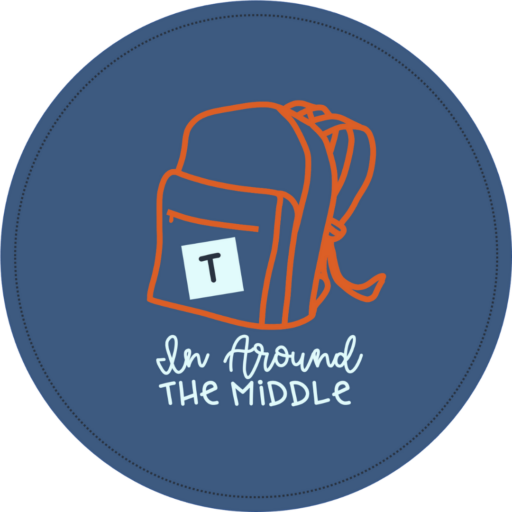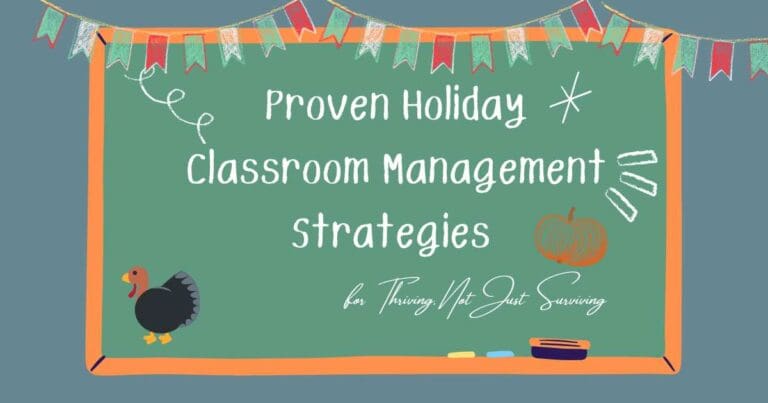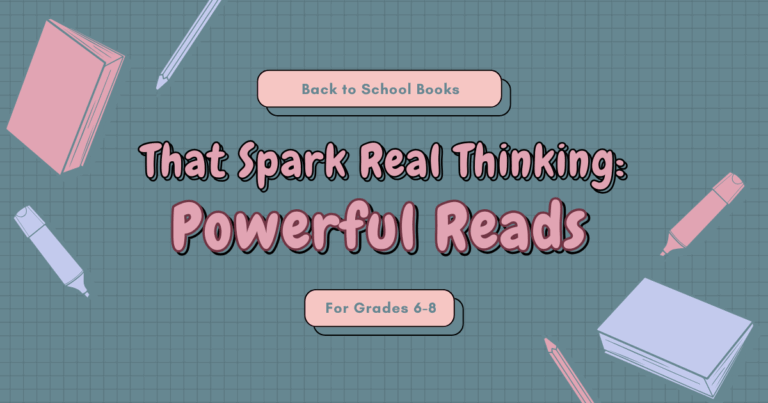The Ultimate Time-Saving Plan: How to Map a Term of Novel Study Activities in One Afternoon
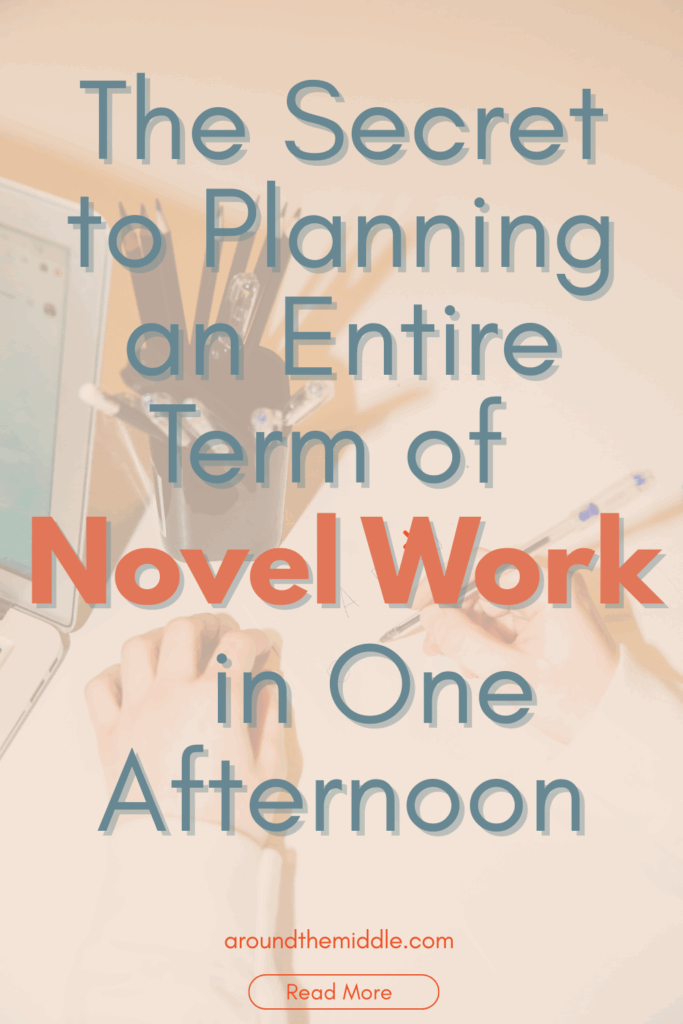
Let’s be honest—planning a novel unit and finding all the right novel study activities often feels like a mountain of work. There’s the reading schedule, comprehension tasks, vocabulary lists, assessments, and a million sticky notes filled with great ideas you might use… if you ever find the time.
But here’s the thing: you don’t need to plan every detail to teach an incredible novel study. Not to mention, you want the flexibility to be able to spend more time on the parts the students really engage with.
With the right process (and a few shortcuts), you can map out a full term of novel study activities—yes, the whole thing—in just one afternoon. No scrambling week by week. No late-night planning sessions. Just one solid framework you can actually stick to.
Here’s how I do it.
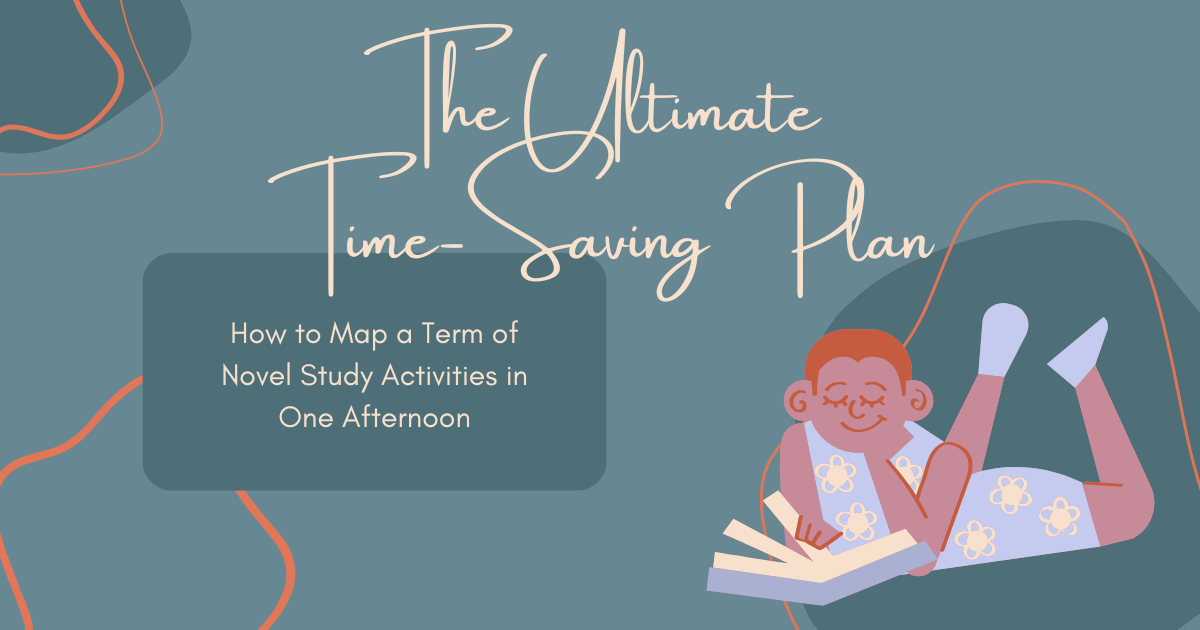
Start with a Novel That Works Harder Than You Do
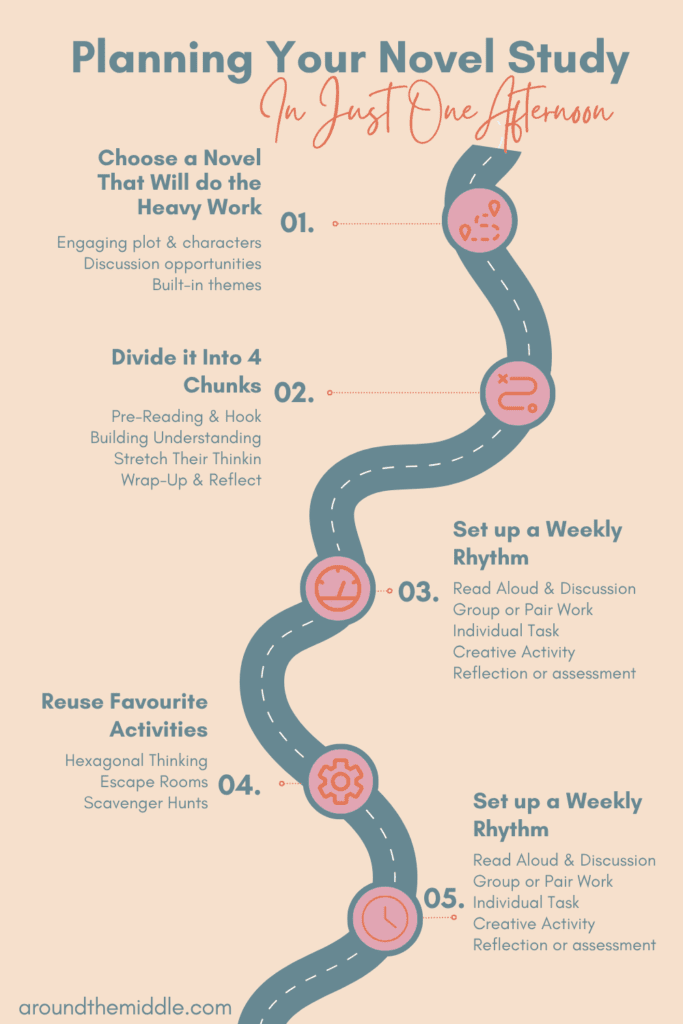
The first (and most important) step is choosing a novel that does the heavy lifting—one with:
- Engaging plot and characters
- Built-in themes that matter
- Opportunities for discussion, connection, and critical thinking
If the book offers natural moments for rich conversation, then your novel study activities practically build themselves.
Need help picking the right one? I’ve got a free guide that walks you through it: How to Choose the Right Novel to Start the Year Strong for Grades 2-4, 4-6, and 6-8.
For mid-to-upper elementary, I look for texts like:
- Among the Hidden – debate-worthy themes and dystopian dilemmas
- Wonder – full of character growth and real-world empathy
- The Giver – abstract concepts and moral questions galore
Choose well now, and you won’t be scrambling later.
Break the Term into 4 Manageable Chunks
Stop thinking in weeks and start thinking in stages. I break my novel studies into four parts:
Week 1: Pre-Reading & Hook

Use activities that build background knowledge and spark curiosity.
Some of my go-to’s:
- Pre-reading scavenger hunts to introduce themes and concepts
- Debate statements to get opinions flowing
- “What if?” discussions that connect the novel to students’ lives
Weeks 2–3: Building Understanding with your novel study activities
Focus on comprehension, vocabulary, and basic analysis.
Use a mix of:
- Teacher-led read aloud and discussion
- Guided journal prompts or character response tasks
- Group brainstorming for theme or setting
Weeks 4–5: Stretch Their Thinking
Time for your students to apply what they know.
Use higher-order novel study activities like:
- Perspective writing
- Mini-debates
- Figurative language hunts
- Theme trackers and character transformation timelines

Week 6: Wrap-Up & Reflect
End strong with:
- Final written task or character letter
- Creative synthesis tasks
- Class debates or theme-based discussions
- Escape room or scavenger hunt-style review
Set a Weekly Rhythm for you novel study activities—and Stick With It
Creating a predictable structure saves so much brain space (for you and your students). Here’s a basic rhythm I use and adapt as needed:
| Day | Focus |
|---|---|
| Monday | Read aloud + discussion |
| Tuesday | Small group or pair work |
| Wednesday | Individual task (writing, drawing, annotating) |
| Thursday | Creative or critical thinking activity |
| Friday | Exit slip, reflection, or quick assessment |
This rhythm helps you plug in novel study activities without overthinking your weekly plan.
Reuse and Rotate Your Favourite Novel Study Activities
You don’t need a whole new set of activities for every novel. Once you’ve built a collection of reusable tools—like debate cards, hexagonal thinking templates, scavenger hunts, and escape rooms—you can modify and reuse them with different texts.
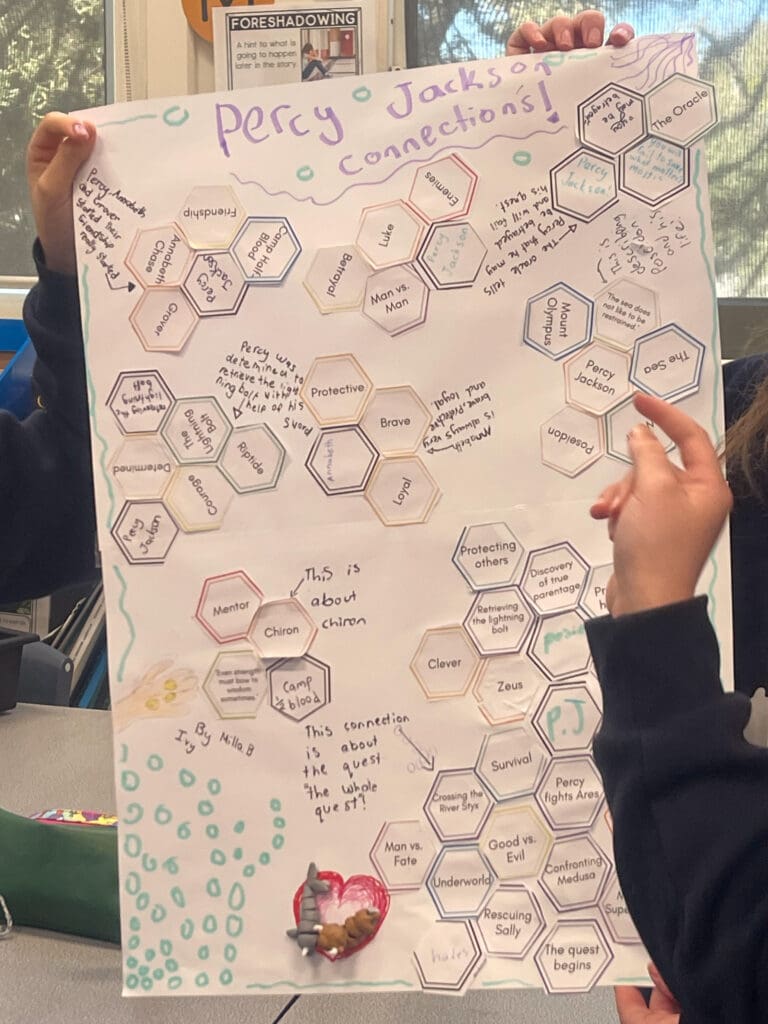
For example:
- Hexagonal Thinking: Use it mid-way through any novel to make students justify connections between themes, characters, and quotes.
- Escape Rooms: Perfect for an engaging end-of-unit review that revisits vocabulary, symbolism, and events.
- Debate Prompts: Just swap out the situation or quote for a new novel and you’re good to go.
Your toolbox grows more powerful with every book you teach.
Focus on Questions, Not Checklists
Here’s the real secret: You don’t need to plan every single task—you just need to plan the thinking.
Instead of listing out 30 activities, start with 2–3 big questions for your novel study:
- What does this book say about power or freedom?
- How does the main character grow—and why?
- What values are being challenged in this story?
When your novel study activities revolve around these guiding questions, everything has a purpose—and you can quickly adapt based on how students respond.
Final Thoughts: You Don’t Need to Do It All—Just Do It Smarter
Planning a novel unit doesn’t have to be a time-suck.
You don’t need 30 unique worksheets or a brand new activity every chapter. You need:
- A strong novel
- A flexible plan
- A solid set of go-to novel study activities
- And the confidence to trust your students with real thinking work
Set aside one afternoon. Sketch your 4-week framework. Choose your essential questions. Pull 6–10 activities from your own toolkit (or mine!) and watch how it all comes together.
You’ve got this—and I’ve got resources to make it even easier.
If you’re thinking about your next novel unit, the first step is choosing a book that opens the door to powerful thinking. If you haven’t yet, download my free guide: 👉 How to Choose the Right Novel to Start the Year Strong
Even mid-year, the same thinking applies: choose well, teach with intention, and watch your students grow—not just as readers, but as thinkers.
Happy teaching
